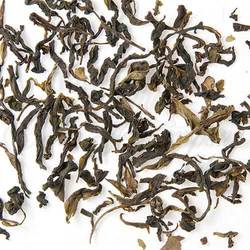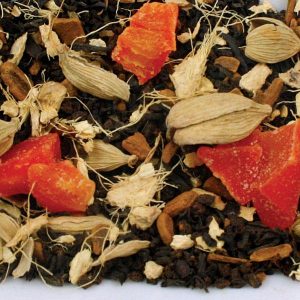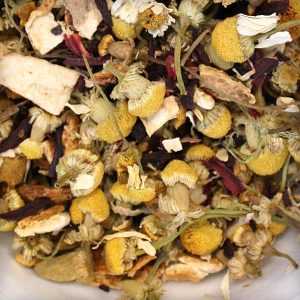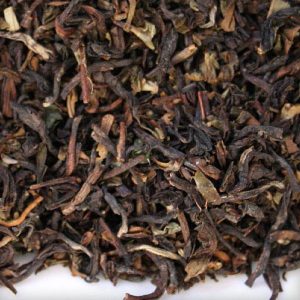Description
Orchid Oolong is one of the world’s most exquisite teas.
With Haunting orchid floral notes in a cup.
This unique rare tea is grown in Guangdong Province of China at the altitudes of 1000 – 2500 feet above sea level.
The tea is Kosher, vegan, vegetarian.
In a tea world populated with literally thousands of oolongs, Orchid Oolong, known in Chinese as a Dan Chong oolong, stands out as one of the greats. How great is it? To answer that question we travel back the Song dynasty (960-1279 CE). At that time, China was ruled by emperors and regional despots who enjoyed ultimate control over their territories – essentially, what they said or did became law. During the Song dynasty, there was one such ruler who controlled territory around Jinxing, Shantou. Surrounding his palace were acres and acres of forest full of plant life of all kinds, including wild orchids and tea. The ruler was known to possess both gentle qualities and exceptionally severe qualities and evidently, these two plants brought out both. One spring morning, the ruler sent his gardeners out to the forest to bring back some fresh cut orchids for his palace. (The gentle side of the ruler enjoyed being surrounded by the beautifully colored blooms.) The gardeners decided to explore a region of the forest they had never visited before and happened upon a clearing filled with orchids of every imaginable description. They began cutting blooms, working their way from the edge of the clearing to the center. Once they made it to the middle, they were amazed to discover a variety of tea none had ever seen before.
The head gardener, knowing this would please the ruler, plucked a basket full of leaf from the bush. Upon returning to the palace, he noticed that the leaf had been bruised during the trip back. The bruised leaf, he decided, would be perfect for preparing an oolong tea. He was right. The edges of the leaves had a slightly brownish hue that turned a subtle pink when fired and the finished tea was wiry, with delicate crinkles. In the cup it offered exceptional orchid-like notes and a delicately balanced sweetness -it was perfect. He presented the tea to the ruler. The ruler loved it and asked very sweetly where he had found such exceptional tea leaves. The gardener took him deep into the forest and once they had found the bush, the ruler rewarded him…by chopping off his head. (As mentioned, he could be a severe man.) Evidently, the ruler didn’t want anyone else to know where the tea had come from. When he got back to his palace, he assembled all the gardeners who had been there on the day the bush was found and executed them as well.
Now, whether or not the above legend is in fact true, we can’t say for certain. What we can say is that this is an impeccable Oolong. To this day, it is made from tea bushes descended from the original – the grade Dan Chong literally translates as “tea from one harvest”. It is also produced in the same manner as it was on the fateful day it was first made. Orchid Oolong can be enjoyed now, or aged in a cool dry environment for future enjoyment. (Some connoisseurs claim its character improves with age like some high quality pu-erhs). A stunning tea ripe with flowery notes and excellent huigan. (That’s Chinese for “finish”)
IDEAL BREWING TEMPERATURE: 85ºC/185ºF. For Food Safety reasons bring water to 100ºC/212ºF and let it cool down to 85ºC/185ºF.
HOT BREWING METHOD:
Bring filtered or freshly drawn cold water to a rolling boil. Place 1 slightly heaping teaspoon of loose tea for each 7-9oz / 200-260ml of fluid volume in the teapot. Briefly infuse with freshly boiled water and then pour off. Re-infuse the tea and pour after about 1 minute or longer to taste.
Oolong tea is a very unique variety of tea and each type of oolong has its unique taste and characteristics.
Today the tea is known as Oolong, but its original name is wulong, which translates as Dark or Black Dragon. It probably got its name for the large, bulky dark leaves, many of which may have a shape of the mystical Chinese Dragon.
Fujian is the home of oolongs. The mystical Wuyi Shan in northwestern part of Fujian is a home of spectacular rock oolong teas such as Da Hong Pao (Royal Red Rope).
Southern Fujian Province is the home of production for such teas as Golden Osmanthus (Huang Jing Gui) and others.
Tiequanyin (Ti Quan Yin or Ti Kuan Yin) is one of China’s most legendary tea is produced in Anxi province.
Oolong tea is highly revered in China and other parts of the world. These sophisticated unique teas represent the pinnacle of the Chinese tea.







Reviews
There are no reviews yet.